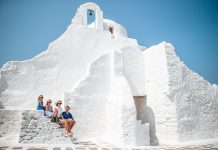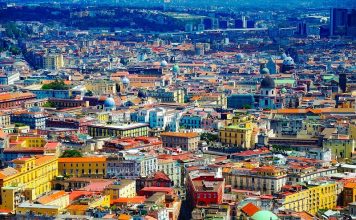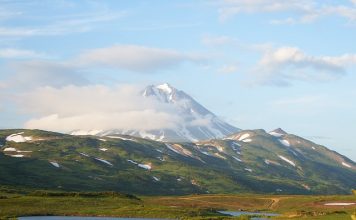Meteora is a UNESCO World Heritage Site in central Greece, famous for its stunning natural beauty, spiritual significance, and cultural heritage. Meteora means “suspended in the air” in Greek, and it is an apt name for the complex of rock formations and monasteries that rise above the plain of Thessaly.
What is Meteora Known For?
Meteora is famous for many things, such as:
- Its geological wonder. Meteora is composed of huge sandstone pillars and boulders that were formed millions of years ago by erosion and earthquakes. The rocks have different shapes and colors, ranging from gray to red to yellow. They create a dramatic landscape that changes with the seasons and the light. Meteora is also home to a rich biodiversity of flora and fauna, including rare species of birds, flowers, and herbs.
- Its religious legacy. Meteora is one of the most important centers of Orthodox Christianity in Greece and the world. Since the 11th century, monks and hermits have sought refuge and solitude on the tops and caves of the rocks, building monasteries and churches that defy gravity and blend with nature. Today, there are six active monasteries that welcome visitors and pilgrims who want to admire their architecture, art, and relics, as well as experience their spirituality and tranquility. The monasteries are: Great Meteoron, Varlaam, Rousanou, St. Nicholas Anapafsas, St. Stephen, and Holy Trinity.
- Its cultural heritage. Meteora has a rich and diverse history and culture that reflects its influences from various civilizations and periods. Meteora has been a place of inspiration and creativity for many artists, writers, musicians, and filmmakers who have depicted its beauty and mystique in their works. Some examples are: the paintings of Theophilos Hatzimihail, the poems of Odysseas Elytis, the songs of Mikis Theodorakis, and the movies of James Bond and Game of Thrones. Meteora also has a vibrant local community that preserves its traditions and customs, such as its cuisine, festivals, crafts, and folklore.
Famous Drinks in Meteora
Meteora has a delicious cuisine that reflects its volcanic soil, climate, and traditions. Along with its food, Meteora also has some famous drinks that are worth trying. Some of them are:
- Tsipouro: This is a strong alcoholic drink made from distilled grape pomace that is produced in Thessaly and other regions of Greece. It has a clear color and a fruity aroma. It can be drunk plain or flavored with anise or herbs. It is usually served in small glasses with ice or water and accompanied by meze (small dishes) such as cheese, olives, or nuts.
- Ouzo: This is another popular alcoholic drink made from distilled grapes or grains that is flavored with anise or other spices. It has a milky white color when mixed with water or ice. It has a sweet taste and a licorice-like smell. It is also served in small glasses with meze or seafood dishes.
- Wine: Meteora has a long tradition of wine-making that dates back to ancient times. The volcanic soil and the microclimate of the area create favorable conditions for growing grapes such as Assyrtiko, Malagousia, Roditis, Xinomavro, Limniona, and Mavro Kalavrytino. The wines produced in Meteora have a distinctive character and quality that reflect their terroir. Some of the best wineries in Meteora are: Tsililis Winery, Katsaros Winery, Zafeirakis Winery, Karipidis Winery, and Glinavos Winery.
- Tea: Meteora is also known for its herbal teas that are made from plants that grow on the rocks or in the nearby forests. Some of the most common herbs used for tea are: sage (faskomilo), thyme (thimari), oregano (rigani), mint (dyosmos), chamomile (hamomili), linden (tilio), rosemary (dendrolivano), lavender (lavanta), lemon balm (melissa), mountain tea (tsai tou vounou), and sideritis (ironwort). These teas have various health benefits and soothing effects.
Famous Sports in Meteora
Meteora is a paradise for sports lovers, as it offers a variety of activities for all levels and tastes. Some of the most popular sports in Meteora are:
- Rock climbing: Meteora is one of the most famous rock climbing destinations in the world, attracting climbers from all over the globe. The rocks offer more than 1,000 routes of different difficulties and lengths that challenge both beginners and experts. The views from the top are spectacular and rewarding. Some of the best climbing spots in Meteora are: Doupiani, Agio Pnevma, Ypsiloterafelo, and Varlaam.
- Hiking: Meteora has many trails and paths that lead to scenic spots and hidden gems. You can hike to the monasteries, the caves, the viewpoints, or the villages, enjoying the nature and the history of the area. Some of the best hiking routes in Meteora are: Kalambaka-Kastraki-Meteora, Kastraki-Agios Nikolaos Anapafsas-Varlaam-Great Meteoron-Kastraki, Kastraki-Holy Trinity-St. Stephen-Kalambaka, and Kastraki-Rousanou-St. Nicholas Anapafsas-Kalambaka.
- Cycling: Meteora is also a great place for cycling, as it has many roads and tracks that offer different levels of difficulty and scenery. You can cycle around the rocks, the valleys, the forests, or the fields, admiring the landscape and the culture of the area. Some of the best cycling routes in Meteora are: Kalambaka-Meteora-Kalampaka, Kalampaka-Kastraki-Meteora-Kalampaka, Kalampaka-Diava-Pyli-Trikala-Kalampaka, and Kalampaka-Aspropotamos-Pertouli-Elati-Kalampaka.
Famous Streets in Meteora
Meteora has many streets that are worth exploring for their beauty, atmosphere, and history. Some of them are:
- Trikalon Street: This is the main street that connects Kalampaka with Trikala, the capital of Thessaly. It is a busy commercial street that has many shops, hotels, restaurants, and cafes. It also has some historical buildings such as the Town Hall, the Cathedral of St. Vissarion, and the Railway Station.
- Patriarchou Dimitriou Street: This is a narrow street that runs parallel to Trikalon Street in Kalampaka. It is full of traditional houses with balconies and windows that display local products such as honey, wine, cheese, and herbs. It also has some churches such as St. George and St. John the Baptist.
- Meteoron Street: This is a steep street that leads from Kastraki to the monasteries. It is a scenic road that offers amazing views of the rocks and the valley. It also has some monuments such as the Monument of Resistance and the Monument of Nature.
- Theopetra Street: This is a street that leads from Kalampaka to Theopetra Cave, one of the most important archaeological sites in Greece. The cave is located on a limestone hill and contains evidence of human habitation dating back to 130,000 years ago. It also has some rock paintings and engravings that are among the oldest in Europe.
FAQs about Meteora
Here are some frequently asked questions about Meteora:
- How do I get to Meteora? You can get to Meteora by car from Athens or Thessaloniki; by train from Athens or Thessaloniki to Kalampaka; or by bus from Athens or Thessaloniki to Trikala and then to Kalampaka or Kastraki.
- When is the best time to visit Meteora? The best time to visit Meteora is from April to October, when the weather is mild and sunny, the flowers are in bloom, and the rocks are more colorful. However, avoid August, when the temperature is high and the crowds are large.
- What are some things to do in Meteora? Some of the things to do in Meteora are: visit the monasteries and learn about their history and art; enjoy the views and the sunsets from various spots; explore the nature and the wildlife of the area; try the local cuisine and drinks; join a tour or an activity to see more of the area or learn new skills.
See more Famous Places in Greece:
- What is Messolonghi Famous For?
- What is Kefalonia Famous For?
- What is Sifnos Famous For?
- What is Peloponnese Famous For?
- What is Zakynthos Famous For?
- What is Nafplio Famous For?
- What is Halkidiki Famous For?
- What is Rhodes Famous For?
- What is Kalamata Famous For?
- What is Katoria Famous For?
- What is Crete Famous For?
- What is Ioannina Famous For?
- What is Kavala Famous For?
- What is Kos Famous For?
- What is Naxos Famous For?
- What is Paros Famous For?
- What is Mykonos Famous For?
- What is Meteora Famous For?
- What is Salamanca Famous For?
- What is Santorini Famous For?
- What is Corfu Famous For?
- What is Athens Famous For?
- What is Thessaloniki Famous For?













